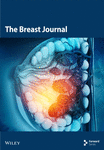Economic Issues in Breast Cancer Care
Abstract
Abstract: Formal cost-effectiveness analyses assume a societal utilitarian perspective with the objective of maximizing net health benefit for members of a population within a limited level of resources. However, rarely are resources truly limited and cost-savings in one area reallocated to the most needy alternative. Therefore, most cost-effectiveness analyses have led to development of practice guidelines and quality of care indicators.
On an intervention-by-intervention comparison within breast diseases, it is striking that most cost-effectiveness studies have been related to screening or the use of adjuvant drug therapies. In prior work, our group has shown that chemotherapy in node-negative breast cancer and tamoxifen alone or in combination with chemotherapy in premenopausal women are cost-effective compared with other common medical treatments.
Given the growth in managed care and interest in disease management systems, one should remember that cost-effectiveness is related to value, value defined as a ratio of quality divided by costs. From a health plan perspective, breast cancer care readily lends itself to systematic appraisal in which guidelines are incorporated in a quality-of-care scorecard.




